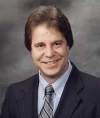What's happening in exploration
Thumping the Earth and taking its temperatureAs you may already know, about a million British schoolchildren tried to cause an "earthquake" on September 8 by jumping up and down simultaneously. They failed to generate any significant energy at seismometer stations in the UK – well, possibly just enough to be detectable above background – but they succeeded in getting into the Guinness Book of Records for the "greatest simultaneous jump in history." Regardless, it was a wonderful participatory science experiment. The good old days are gone when seismologists could count on an underground thermonuclear explosion to help them image the Earth’s interior – although monitoring for atomic testing continues. And although earthquakes remain the best energy source, they never occur on schedule, in a predictable place. But could this be the beginning of even grander schemes? The British kids were distributed throughout their country. However, imagine a distribution of more concentrated sources, say, in Houston, London, Paris, Caracas, Mexico City, etc., each comprising a few million people jumping in sync to a precise GMT countdown on radio or TV. It might help seismologists image the Earth’s interior or help fine-tune nuclear weapons-testing monitoring. Or maybe none of these. But it would likely be a fun distraction from daily work. One of the British students commented, "I’ll bet there will be lots of hospital visits from people with sprained ankles." The temperature at Earth’s center. At the center of the Earth is thought to be a 750-mi diameter, iron-rich, solid core surrounded by molten material. A new study will allow further refinement of this model. There are several lines of evidence that test this hypothesis. One is the "shadow" effect from seismic P-waves vs. S-waves; the latter cannot transverse a molten / liquid medium. Density considerations with respect to gravity narrow the choice of core material, as does the existence of Earth’s magnetic field, which is most likely created by movement of conductive material such as iron. Other evidence is from computer models that apply physics to the properties of iron. A basic problem with most computer modeling of complex phenomena is the need for ever more-powerful computers: compromises and approximations must be made. But as computer power increases, results can change. Professor Lars Stixrude and graduate student Gerd Steinle-Neumann at the University of Michigan, Ronald Cohen from the Geophysical Laboratory of Carnegie Institution of Washington, and Oguz Gulseren from the National Institute of Standards and Technology used supercomputer simulations to study changes in the crystal structure of iron at high pressures and very high temperatures (6,740 – 12,140°F). Their work is published in the September 6 issue of Nature. Geophysicists have long been puzzled by observations, based on seismic measurements, that elastic waves are anisotropic with respect to the inner core, i.e., traveling faster when parallel to Earth’s polar axis than in other directions. The cause of this difference has not been understood, partly because elastic properties of iron at the extreme conditions of Earth’s center are not known. Direct measurements are, of course, currently impossible, and core conditions are difficult to duplicate in the lab. Changes in the hexagonal prism shape of iron crystals directly influence elastic properties, Steinle-Neumann explains. To the researchers’ surprise, the computer simulations showed that elastic properties of iron were very different at high temperatures than at low temperatures. This finding should lead to new interpretations of seismic data regarding the inner earth. The new results support the hypothesis that anisotropy in seismic wave propagation is due to crystal alignment in the inner core. Stresses acting on the inner core influence the alignment process, and various models have been proposed to explain how that occurs. The scientists considered several of those models and developed their own, simple model of inner-core structure, in which the hexagonal bases of iron crystals tend to align with Earth’s polar axis. The strong temperature dependence of average seismic wave velocity in iron and a near-perfect agreement of such properties with inner-core models point to a temperature of 9,800°F at the center of the Earth. Steinle-Neumann commented, "We are characterizing material properties that will ultimately help us understand the dynamic processes which underlie the differences in seismic wave velocity." The researchers hope that other scientists will use this new understanding of the high-temperature elasticity of iron to refine models of the dynamics in Earth’s inner core. The first applications of these results are published in the same issue of Nature by Bruce Buffett of the University of British Columbia and Hans-Rudolf Wenk of University of California at Berkeley. The work was supported by the National Science Foundation and the U.S. DOE. Correction ad nauseam. The correction in this column in August was, regrettably, incorrect. I referred to AGI as the American Geophysical Institute, which, as far as I can determine, does not exist. AGI refers to the American Geological Institute. I searched on "American Geophysical Institute" using my favorite search engine (mostly due to its cached page feature), Google (www.google.com). The search returned more than 50 hits, mostly at government and university sites. As penance to AGI – a worthwhile organization – I’ve contacted the webmasters at those sites and asked that they make the needed corrections. Fortunately, where links were involved, most of them pointed to www.agiweb.org, which is the correct address. Reader Hugh Hay-Roe of BPZ & Associates compared my
gaffe to the newspaper editor who wrote, "Our last edition incorrectly identified so-and-so as ‘a
detective on the police farce.’ He is actually a defective on the police force."
|



